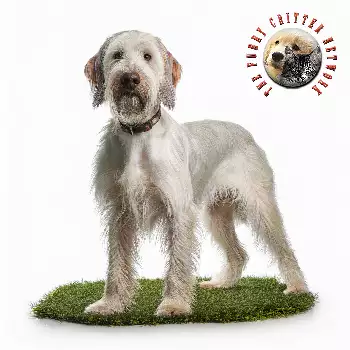The Czech Coarsehaired Pointer carries a rich heritage reflected in the numerous names by which this versatile hunting breed has been known throughout its long history in Central Europe. Each designation reveals something about the breed's character, appearance, or geographic origins, providing insight into how different cultures have perceived and valued this remarkable sporting dog.
The official registered name Cesky Fousek represents the breed's designation in its homeland, combining the Czech word cesky meaning Czech with fousek, derived from vousy or fousy meaning facial hair or whiskers. This name directly references the breed's most distinctive physical feature, the prominent beard and moustache that characterize wirehaired pointing breeds. Interestingly, Cesky Fousek specifically refers to male dogs, while females are traditionally called Ceska Fouska in proper Czech usage.
The name Czech Coarsehaired Pointer has gained widespread use in English-speaking countries, clearly describing both the breed's national origin and its distinctive coat texture. This practical designation helps distinguish the breed from other wirehaired pointing dogs while emphasizing the coarse, harsh quality of the outer coat that provides excellent protection during fieldwork.
Bohemian Wirehaired Pointing Griffon represents another widely recognized name for the breed, referencing the historic region of Bohemia that comprises much of the modern Czech Republic. This designation places the breed within the griffon family of wirehaired hunting dogs, acknowledging its relationship to other rough-coated Continental pointers. The griffon classification reflects the beard and moustache common to this family of sporting breeds.
Historical documentation reveals even more names for this ancient breed. The earliest known written reference appears in a 1348 letter by Czech nobility describing dogs called Canis Bohemicus, considered by many historians to reference ancestors of the modern breed. This Latin designation translates to Bohemian Dog, confirming the breed's deep roots in the Czech lands during the medieval period.
The breed has also been known as the Czech Wirehaired Pointer, Rough-coated Bohemian Pointer, and Slovakian Wirehaired Pointer, the latter reflecting the breed's popularity throughout the former Czechoslovakia. French-speaking regions have used the term Barbu tcheque, meaning Czech Beard, another reference to the characteristic facial furnishings.
Before the breed received its modern name, dogs of this type were sometimes called Czech Pointers or Bohemian Pointers without specific reference to coat type. Historical documents also mention similar dogs under German designations including Stichelhaar, meaning prickly hair, reflecting the period when German language dominated in the region under various empires.
Recognition of the Czech Coarsehaired Pointer by international kennel organizations has established its place among the world's premier hunting breeds. The Federation Cynologique Internationale granted official recognition in 1964, classifying the breed in Group 7, Section 1.3, among Continental Pointing Dogs of the Griffon type. This recognition validated decades of preservation efforts following the breed's near-extinction during the world wars.
The United Kennel Club recognized the breed on January 1, 1996, placing it within the Gun Dog Group. The UKC designation as Cesky Fousek with the parenthetical Bohemian Wire-Haired Pointing Griffon acknowledges both the breed's native name and its classification among griffon-type hunting dogs.
The American Kennel Club includes the Czech Coarsehaired Pointer in its Foundation Stock Service under the name Cesky Fousek. This designation allows the breed to participate in certain AKC events while working toward eventual full recognition. The FSS status reflects growing American interest in this versatile hunting breed.
Breed clubs dedicated to the Czech Coarsehaired Pointer operate worldwide, with Cesky Fousek North America serving as the primary organization in North America. This club works closely with the original Czech breed organization, Klub chovatelů českých fousků, to maintain breeding standards and preserve the breed's exceptional hunting abilities. These organizations ensure that the breed retains the characteristics that have made it valued by hunters for centuries.

